
From Wallet to Typewriter, the Effects of Sylvia Plath Are Now For Sale
You, Too, Can Own a Piece of Literary History (If You Are Rich)
On March 21, 300 lots of rare books, manuscripts, and memorabilia that once belonged to poets Sylvia Plath and Ted Hughes will go to auction in London. Considering the celestial status of Plath, this sale promises to dazzle. It’s a very personal collection, deriving from their daughter, Frieda Hughes, who shares her concern in the auction catalog’s introduction that treasured pieces of family furniture or jewelry might be lost to history if she doesn’t ensure their future in some tangible way. An auction, she writes, will “enable others to take on the preservation and enjoyment” of these literary relics. “In identifying which items to sell, I realised that much of what I owned, redolent of my parents’ joint history, told a story; one item made sense of other items—the books and the pamphlets and the poems, signed by my mother or father, represented important aspects of their literary lives and were evidence of their powerful partnership.” (All images courtesy Bonhams)
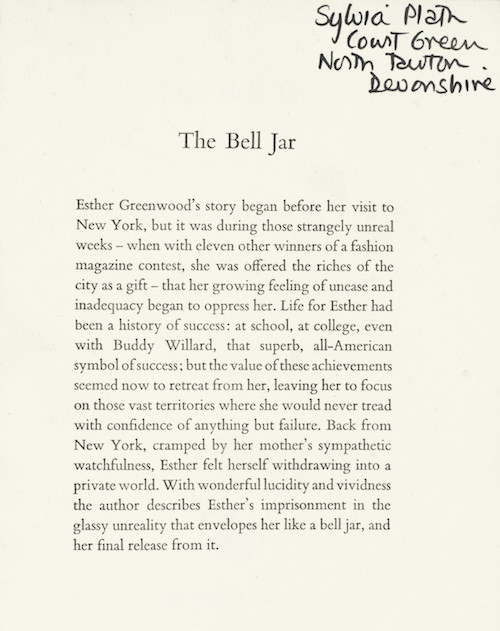
Sylvia Plath’s heavily corrected proof of her pseudonymously published novel, The Bell Jar, is as close to Plath as an admirer can get 55 years after her death. Not only is this proof copy inscribed “Sylvia Plath Court Green North Tawton Devonshire” on the first page, it contains 70 of her revisions in blue ink throughout, e.g. she changed “Plato” to “Socrates” on page 53, and “Prams” to “Carriages” on page 122).

Of course, the first edition is prettier, and perhaps even more coveted, as it was Plath’s own copy, which she signed and dated “Christmas 1962” just prior to publication and six weeks shy of her suicide. She also included her new address, 23 Fitzroy Road, a London flat that had once been the home of W. B. Yeats, and where Plath, at that point separated from Hughes, claimed to be “happy … as a clam.”
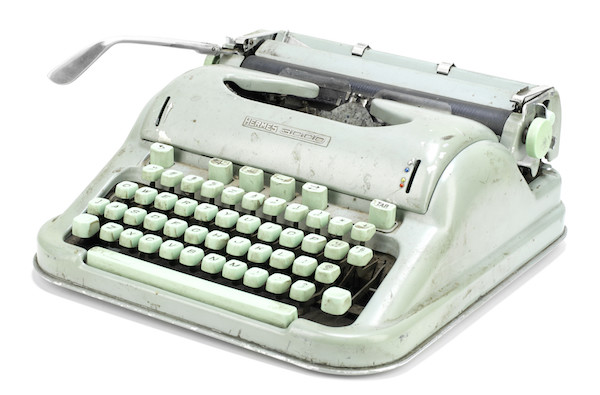
Retro typewriters are super collectible, and Plath’s vintage mint green Hermes 3000—with which she wrote The Bell Jar (!)—is likely to be one of the auction’s top lots, estimated to reach as high as $84,000. Of this machine, she wrote to her mother in 1959, “My typewriter is marvelous. I love it.”
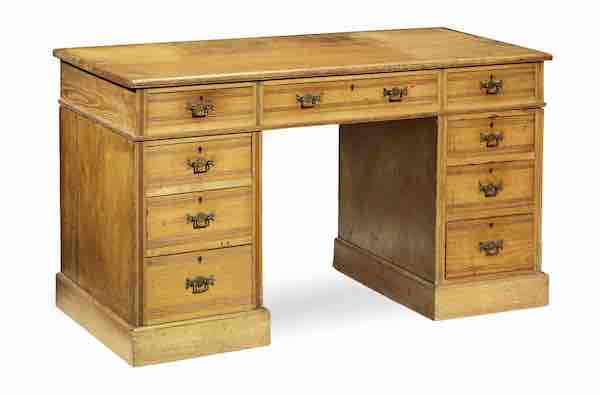
Presumably one of many desks Plath used in her short life—the elm plank handmade by her brother and sanded by her husband being, perhaps, the most evocative of her writing surfaces—this late Victorian pedestal desk comes from the Court Green home Plath shared with Hughes.

Plath graduated first in her class at Bradford Senior High School in Wellesley, Massachusetts, in 1950. According to her class yearbook, called The Wellesleyan, Plath was “clever with chalk and paints” and a “future writer.” This yearbook is inscribed beside her photograph with a note to her pal, Patricia O’Neill: “Dear Pat – Leaves & sun, pine needles and hamburgs – all this and the best friend a girl could ever have.”
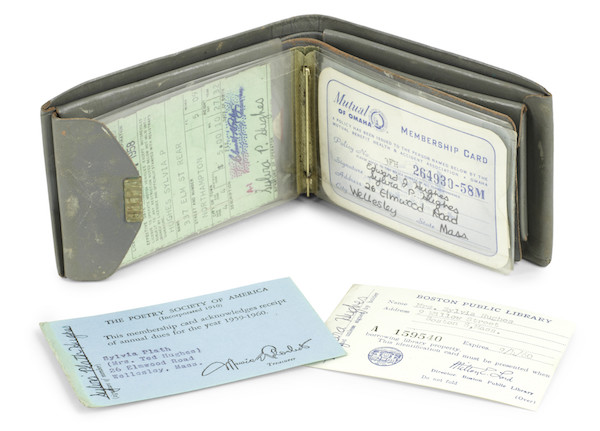
This simple gray leather wallet contains multitudes—tucked inside are seven of Plath’s membership and ID cards, including her Poetry Society of America membership card, her Boston Public Library card, and her driver’s license. They date to 1958-1960, and six are signed. There’s also a keepsake photograph of Sylvia with her mother and brother from Christmas Day, 1953.

“How I love to cook,” Plath once wrote. And it seems the Joy of Cooking was a favorite; she enjoyed “reading it like a rare novel.” This is her own stained 1953 reprint, signed and annotated in her hand. She starred some recipes like vichyssoise and ‘pork chops baked in sour cream’ and noted that Ted especially liked breaded veal slices.

In a family of writers, it makes sense that the dictionary might take the place of the ancestral bible, as the Plath/Hughes copy pictured here does. Signed by both poets and dated ‘15th December 1956’, this Shorter Oxford English Dictionary records the names and birthdates of their two children, with young Frieda’s own signature added at the bottom. (Plath’s real bible is also on offer, as well as her thesaurus.)
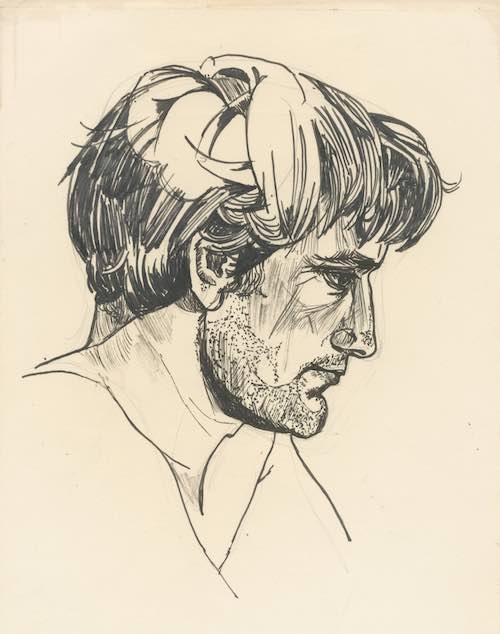
Plath’s pen and ink portrait of Ted Hughes was likely executed during their honeymoon in Paris and Spain, in the summer of 1956. A few months later, she wrote to her mother about the sketches she had made: “every drawing has in my mind and heart a beautiful association of our sitting together in the hot sun, Ted reading, writing poems, or just talking with me … the sketches are very important to me.”
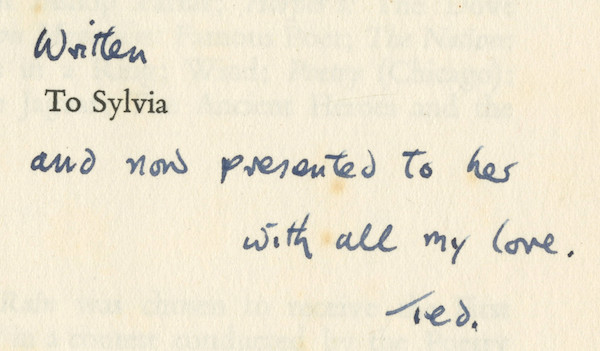
In a press release, Bonhams’ senior book specialist, Luke Batterham, commented, “This fascinating collection provides a riveting insight into the warmth and mutual support of the Hughes-Plath creative relationship, especially in the early years of their marriage.” It’s a statement that has the potential to rankle, considering the allegations of domestic abuse that have surfaced, and yet, to behold Plath’s drawing of Hughes and his tender dedication to her on this presentation copy of his first book, The Hawk in the Rain, is to believe that they must have been happy once.
Rebecca Rego Barry is the author of Rare Books Uncovered: True Stories of Fantastic Finds in Unlikely Places and the editor of Fine Books & Collections magazine.
Rebecca Rego Barry
Rebecca Rego Barry is the author of Rare Books Uncovered: True Stories of Fantastic Finds in Unlikely Places and the editor of Fine Books & Collections magazine. On Twitter @rrb_writer.



















